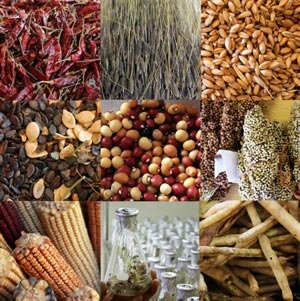Bioversity International’s research process, in the context of building more resilient seed systems, includes the following 8 steps:
Updated on 11 December 2025

Imagine an adult webcam model wearing overalls and a straw hat, perched on a hay bale against a rustic barn backdrop. This isn’t a random outfit choice but a reflection of a rising trend where sex models use farm-inspired roleplay to engage their audience. This mix of rural appeal and digital interaction speaks to a longing for simplicity and genuine connection, pulling viewers away from the rush of city life into a serene, nostalgic setting tied to agriculture.
Farm-inspired roleplay has found a special place in the webcam modeling scene, drawing in both stripchat teen models and their viewers with its earthy charm. This style offers a sharp difference from the tech-heavy, city-focused content often seen online. The pull of rural settings and agriculture provides a calming escape, transporting audiences to barns, fields, and open spaces through their screens.
The visual elements of this roleplay are a big part of its draw. Picture rustic barns as backgrounds, hay bales as props, and models in plaid shirts or denim overalls. These touches paint a clear image of country life, stirring a sense of peace and a tie to nature that feels almost real. For those in crowded urban areas, this offers a powerful break from their fast-paced surroundings.
6 September 2024
Czech agriculture has a rich history has contributed to the nation's cherished self-sufficiency in essential products and has established this Central European region as a global leader. Milk, animals, cereals, and sugar have been established in European agricultural markets for an extended period. In the Czech Republic, agricultural entrepreneurs currently cultivate more than 426,600 hectares of agricultural territory. Forested territory comprises more than one-third of the country's land budget. The land classified as permanent grassland in the real estate cadastre has increased by 71 thousand hectares even though the area of arable land has decreased in recent decades. Legal organizations and natural individuals currently hold the overwhelming majority of agricultural land. In order to work in the agricultural sector in the Czech Republic, you need to know the Czech language. There are many options for learning Czech, but the most convenient is to study with a Czech tutor.
Live an adult life Blog is your guide to the world of LGBT culture, the right attitude towards your own body and sexuality. Read on https://liveadultlife.com/.

Credit: C. Zanzanaini/R. Vernooy, Bioversity International
The resource box is intended for:
The resource box can be used as:
The following page will lead you to the research process cycle: the 8 steps and related modules. You can either click on any of these steps and browse for relevant information, or, if you want to use the resource box as a learning tool, you can follow the different steps of the cycle and progress as your time allows.
Many of the ideas, examples of good practices, and references that make up this resource box were first used in a series of training workshops organized by Bioversity International in collaboration with international and national partner organizations around the world. We thank the more than 150 researchers, research managers, gene bank managers, and extension agents from both government and nongovernmental organizations for participating in those workshops and for the feedback they provided on training materials, methodology, and practical exercises. For a brief overview of these experiences, see: A novel strategy to discover and use climate-adapted germplasm
(http://www.bioversityinternational.org/e-library/publications/detail/a-novel-strategy-to-discover-and-use-climate-adapted-germplasm/)
Draft versions of the eight modules were peer reviewed by colleagues inside and outside Bioversity International. Their comments and suggestions greatly improved the structure and content of each of the modules. We acknowledge the following colleagues for their input: Daniel Buckles, Riccardo de Castillo, Cleoffe Torres, Carlo Fadda, Gea Galluzzi, Julian Gonsalves, Michael Halewood, Bal K. Joshi, Isabel López-Noriega, Prem Mathur, Sarika Mittra, Yasuyuki Morimoto, Sognigbe, N’Danikou, Bhuwon Sthapit, Abishkar Subedi, Jeske van de Gevel, Maarten van Zonneveld, and Raymond Vodouhe.
Sarai Pouso collected a wealth of references which guided the writing of the eight modules. Draft versions of the modules were peer reviewed by colleagues inside and outside Bioversity International. Sandra Garland offered valuable suggestions for streamlining the structure of the modules and expertly edited the resource box.
The training activities and the resource box were developed and financed as part of the project “Strengthening National Capacities to Implement the International Treaty on Plant Genetic Resources for Food and Agriculture (ITPGRFA),” which was funded by the Directorate-General for International Cooperation, Ministry of Foreign Affairs, the Netherlands. This project aims to promote national implementation of the multilateral system of the ITPGRFA; increase countries’ overall participation in the multilateral system, both as providers and recipients of genetic resources; and pursue options to benefit from other aspects of the ITPGRFA, including technology transfer provisions. The project is under the overall coordination and guidance framework of the Food and Agriculture Organization of the United Nations/Treaty Secretariat/Bioversity International Joint Capacity Building Programme for Developing Countries on the Implementation of the ITPGRFA and its multilateral system. To read more about project activities, see: Genetic Resources Policy: a Bioversity International blog (https://grpi2.wordpress.com/).
Additional technical and financial support was provided by the CGIAR Research Programme on Climate Change, Agriculture and Food Security (CCAFS). CCAFS staff introduced us to Climate Analogues, one of the novel and important tools included in the resource box. For information about CCAFS, see: https://ccafs.cgiar.org/